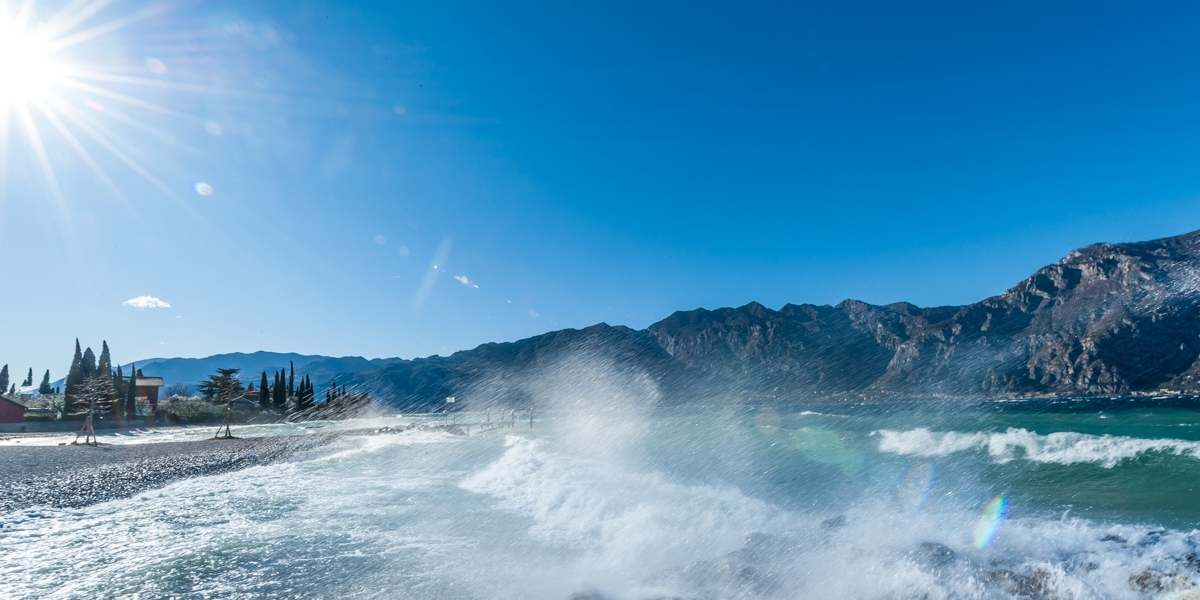The winds of Lake Garda
- E_LAGO
- M_BEACTIVE
- M_OUTDOOR_WATER
- M_LAGO
- M_SURF
- M_VELA
- M_KITE
- M_WATERSPORT
- M_FISHING
- M_NAVIGAZIONE
- T_GENNAIO
- T_FEBBRAIO
- T_MARZO
- T_APRILE
- T_MAGGIO
- T_GIUGNO
- T_LUGLIO
- T_AGOSTO
- T_SETTEMBRE
- T_OTTOBRE
- T_NOVEMBRE
- T_DICEMBRE
Lake Garda is a mountain lake which extends south to the Padan Plain. The Garda winds are thermal and depend on the weather conditions in the mountains and valleys and the heating of the earth and water.
On days of regular wind, Malcesine enjoys the Pelèr in the mornings, the North wind which dies away in the late morning and allows the Ora, the calmer and more regular south wind, to take its place.
Garda's winds are constant winds: they vary from zone to zone of the Lake in intensity in the morning and afternoon and are ideal for those wishing to start wind sports and for those who want to improve or train.
It's not by chance that famous international athletes come to train and live at Lake Garda.

The Pelèr (wind or north wind)
The Pelèr is the good weather wind which blows regularly during the summer months from north to south. The Pelèr starts to blow at night and carries on as the sun rises. The strongest Pelèr blows when the sun's rays hit the west coast of the Lake.
It is usually 20 knots but can often reach 30 knots. In the late morning, the Pelèr starts to drop and the Ora, the afternoon wind, takes over.
Ora (south wind)
The Ora is the most well known wind on Garda. The Ora starts when the Pelèr has finished, between 12 noon and 1pm (approx.) on normal days and dies away with the sunset.
It is created by many small winds that join together. The Ora is a very regular wind, strong in the spring and the start of the summer.
The Ora tends to be less strong when the temperature difference between day and night is less varied.
To have a good strong Ora, the sun has to heat up the water and mountain range to the north of the Lake and you will see that if the sky is very cloudy, the wind will drop noticeably.
Its strength varies greatly depending upon where you are on the Lake and it gets stronger as it heads north.
At Malcesine, the Ora is normally 15 knots.
Warning
A daytime storm can bring wind inversion which is often violent and dangerous.
Normally these inversions are where a south wind turns to become north wind and rarely the other way round.
Each coast and zone of the Lake has its own local winds, each very particular and understood best by locals and sailors.
By watching the Lake, you can learn to recognise the signals that announce a change in or arrival of a particular wind.
A good piece of advice is to keep an eye on what the locals are doing or ask them for advice if needs be.
You should not underestimate the winds of Lake Garda: you can have the same problems here as you could find on the sea.
Good wind to you all!